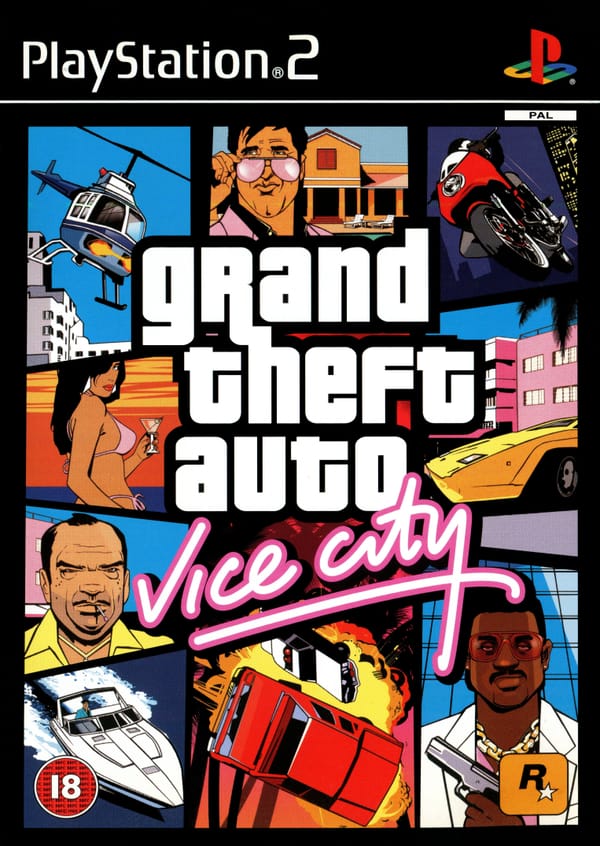SSX 3: The Open-Mountain Snowboarding Classic That Still Hits Like Fresh Powder
You remember the first time you dropped from Peak 3, right? Wind howling, powder kicking off your board, DJ Atomika chirping in your ear, and then—right when you hit that first kicker—the music shifts like it’s reading your mind.
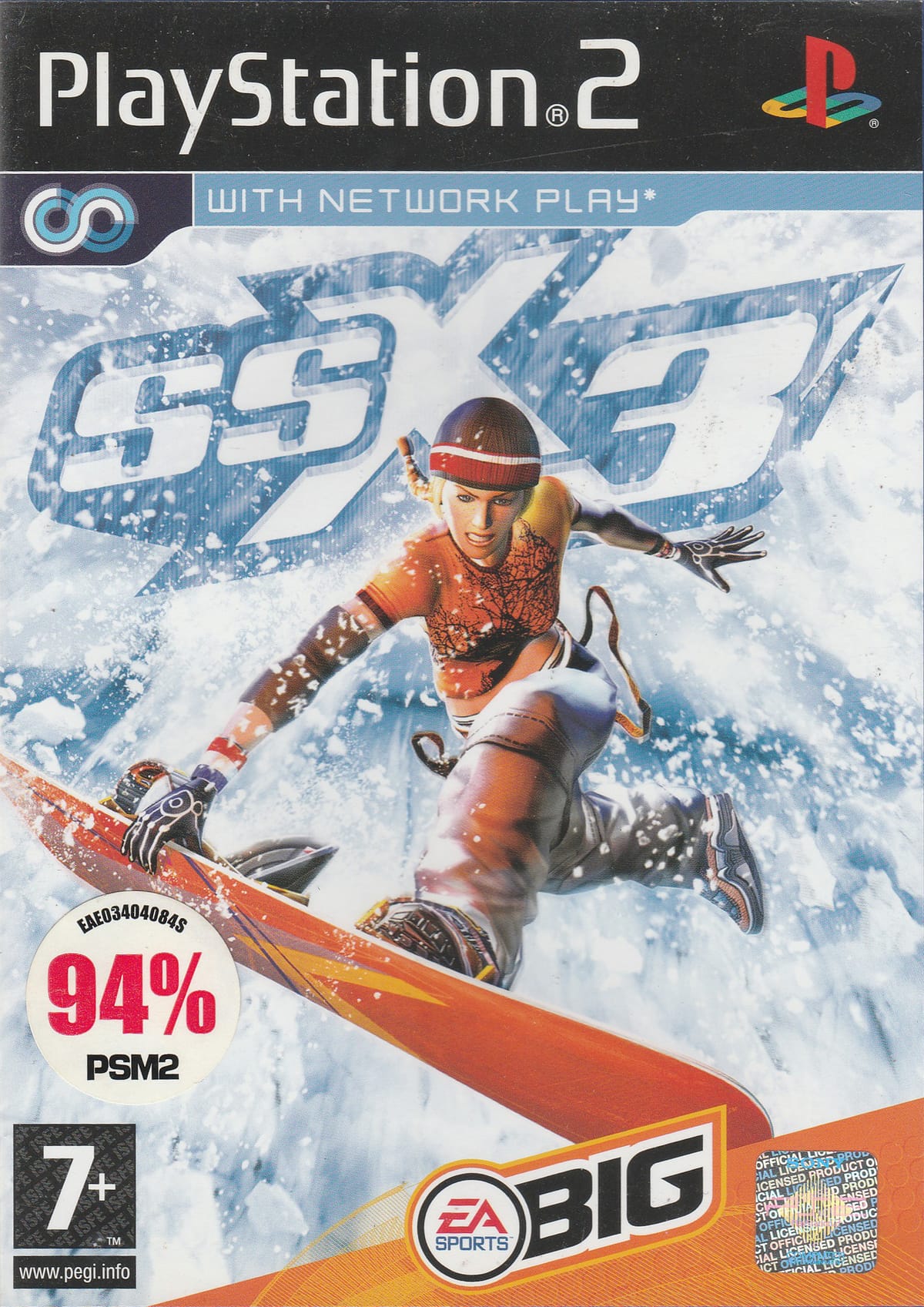
You remember the first time you dropped from Peak 3, right? Wind howling, powder kicking off your board, DJ Atomika chirping in your ear, and then—right when you hit that first kicker—the music shifts like it’s reading your mind. SSX 3 didn’t just get snowboarding right. It nailed the feeling of flow.
What it is and why it mattered
Released in 2003 by EA Sports BIG on PlayStation 2, GameCube, and Xbox, SSX 3 reshaped action-sports games by stitching together one giant mountain. Instead of hopping between disconnected menus, you rode a living place—Peaks 1, 2, and 3—stitched into one sprawling descent. Events popped up like ski-town posters. Tents, gondolas, rails, shortcuts, and entire lines were tucked into corners you’d miss if you weren’t curious.
It’s arcade, sure—boost meters, wild tricks, fireworks-level airtime. Funny thing, though: the physics still feel grounded. Edge control matters. Landings matter. Speed management matters. It’s exaggerated snowboarding with a surprising soul.
The mountain is the star
SSX 3 treats the mountain like a character. You can freeride from the summit to the base, stringing together bowls, tree runs, roads, and ice fields with only a few micro-pauses. Peak 1 feels like a warm-up hill you learn to love. Peak 2 turns up the difficulty and the drama. Peak 3 is pure chaos—thin ridges, howling storms, and the kind of drop-ins that test your nerve.
Events nest inside that world without breaking flow:
- Race: pedal-to-the-floor lines where you pick riskier shortcuts for speed.
- Slopestyle: technical runs packed with rails and gaps for precision scoring.
- Super Pipe: big amplitude and clean landings; timing counts.
- Big Air: fine, it’s a one-hit wonder—but that single hit? It’s massive.
There are side tasks everywhere—little challenges that teach lines and tech. Some ask for combo targets. Some send you hunting for fast routes. They’re snack-sized, and they taste like progress.
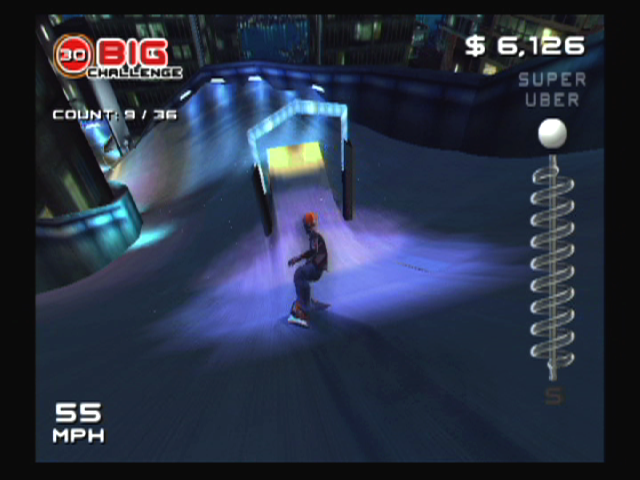
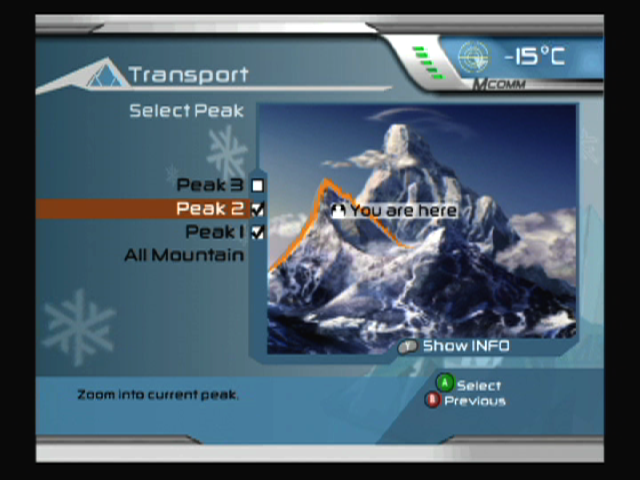
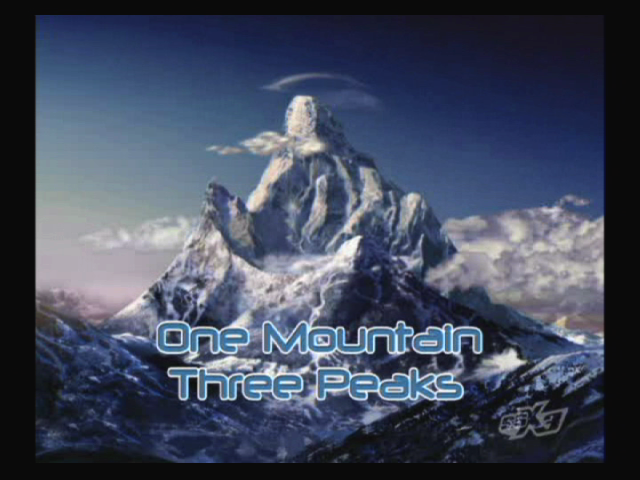
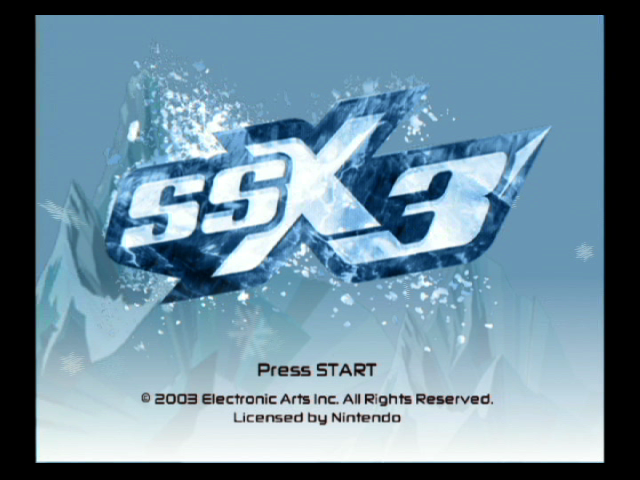
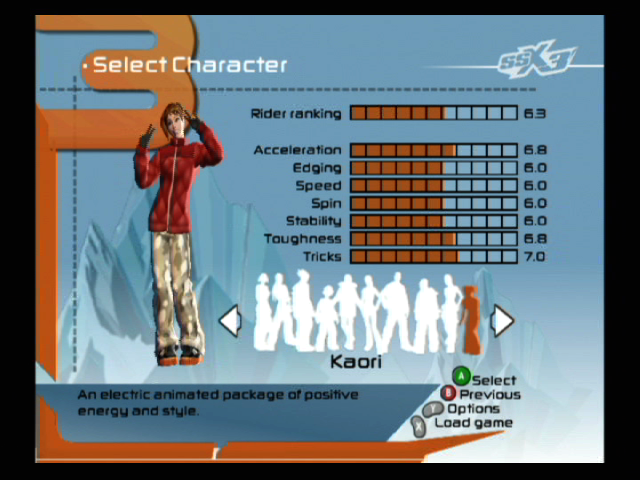
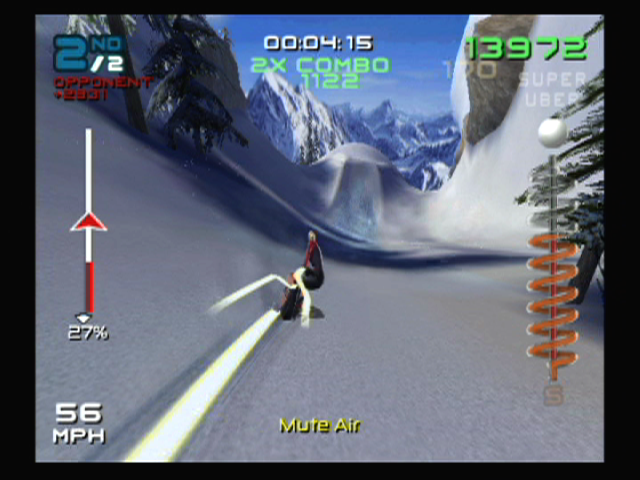
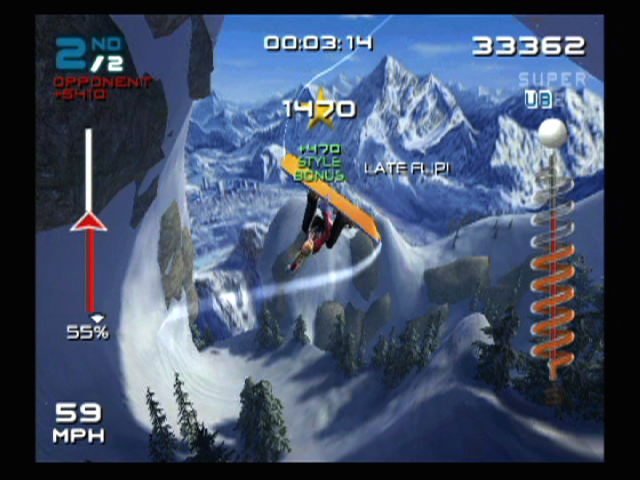
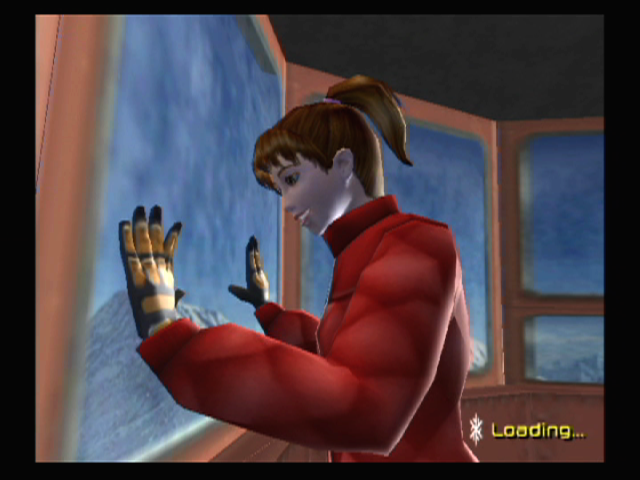
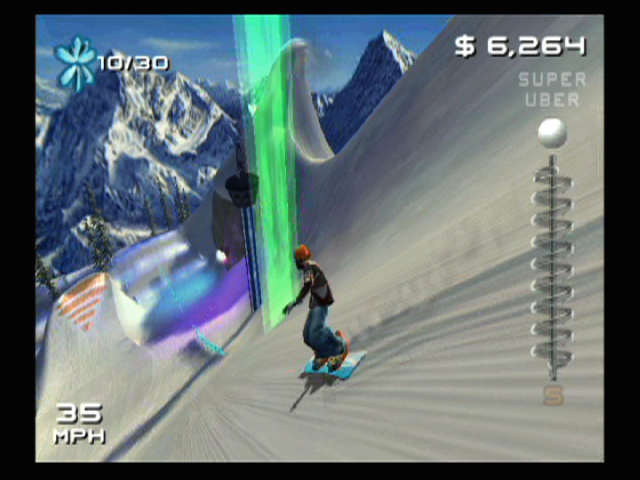
Risk, reward, and that smooth trick system.
SSX 3’s trick grammar is simple on purpose: grabs, spins, flips, and tweaks layer into clean combos. Grinds feel sticky in a good way, but you still have to set your approach and balance. The boost meter ties the room together—land clean, go faster, and earn the right to throw Ubers. Stack enough heat and you open up showstopper moves that feel like fireworks without turning the game into button soup.
Here’s the thing: you can play it safe and still have fun. But push a little, and the game answers back. Spin a hair later. Tweak a grab longer. Squeeze a grind out across a rail you didn’t think you could hold. The rhythm’s addictive. Miss a landing and you’ll actually learn something, which is not a given in arcade racers.
Sound and style you can feel
EA Sports BIG always had flair, and SSX 3 was peak swagger. The soundtrack was more than a playlist; it was reactive. Vocals ducked under big spins, bass lines snapped during grinds, and drops hit right when you did. Radio BIG, with DJ Atomika’s play-by-play and banter, made the mountain feel like it had its own local station—part hype man, part traffic report.
Visually, the game still looks sharp. Crisp snow spray. Deep carving marks. Sunny bluebird runs and angry storm clouds on Peak 3. It’s stylized, but the way light hits powder as you snake through trees still makes you lean in your chair.
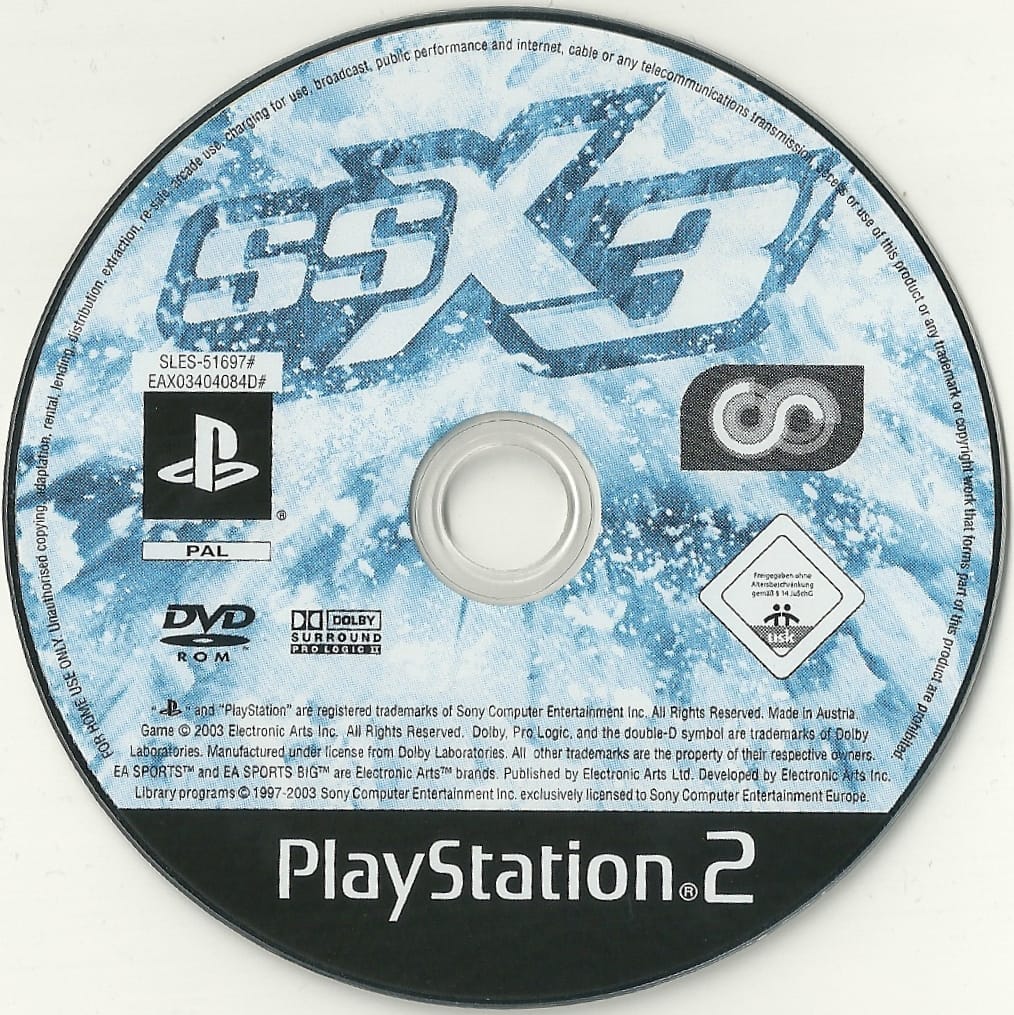
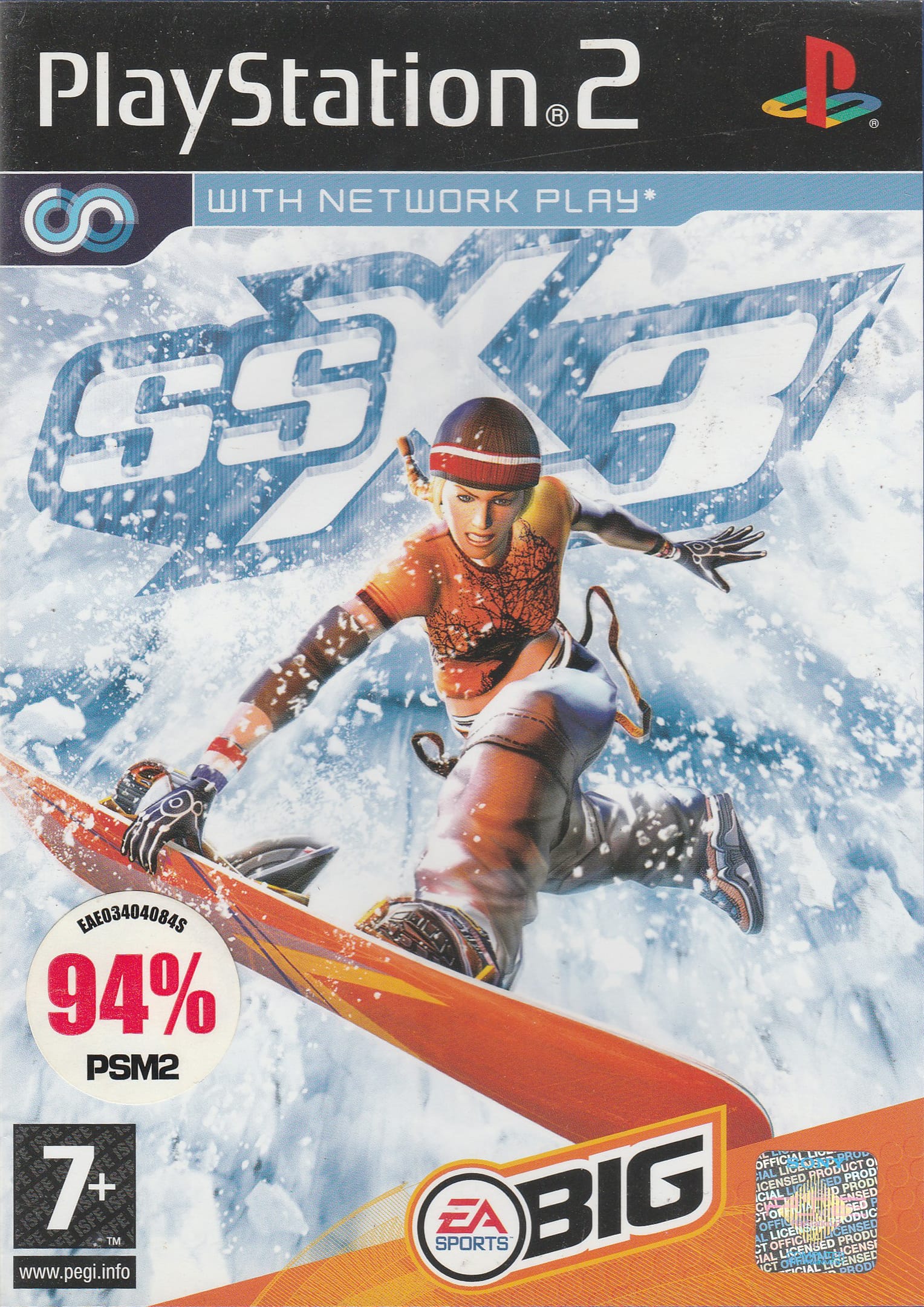
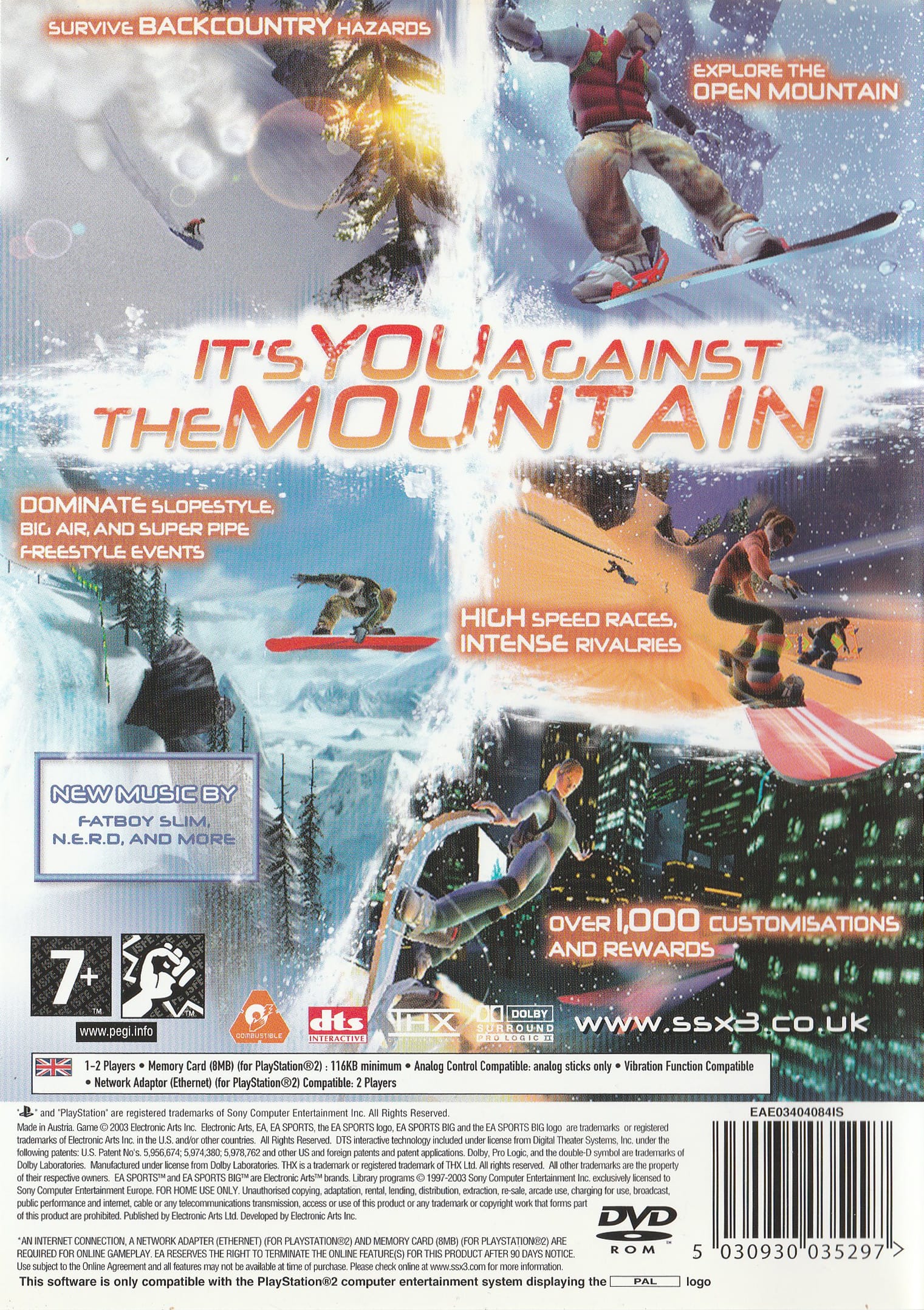

Progression that respects your time
The career mode—Conquer the Mountain—lets you build your rider the way you like. You earn cash from events and challenges, then spend it on gear, outfits, and stat boosts. Boards have distinct feels; a freeride plank that floats through powder won’t handle rails like a park deck, and that tradeoff is part of the fun.
Big Challenges pull you off the main path in the best way. “Can I clear this gap?” turns into “Wait, there’s a hidden line behind that billboard.” It’s gentle teaching disguised as mischief.
Personality without the fluff
SSX 3’s roster has charm: Elise with that daredevil confidence, Mac with the goofball swagger, Kaori’s cheerful spark, Psymon’s chaos energy, Zoe’s punk-edged grit, Moby’s steady power. They talk a little, pose a little, and get out of the way when you’re riding. Costume kits and colorways let you signal a vibe without drowning the screen in menus.
Couch battles and mountain lore
Split-screen races on slopestyle tracks were friendship-ruiners in the nicest way. A snug line through ice caves could erase a full second. A blown landing at the finish could hand the win to your buddy, who would absolutely bring it up for the next six months.
Online play came and went back then, but the community never really left. Fans set up time-trial threads, line guides, and high-score chases on forums like MerquryCity.com. Speedrunners still pick apart the mountain for frames, finding bizarre little cuts you’d never think to try.
Why it still holds up
SSX 3 has pace. Not just speed—pace. You move from camp to event to freeride like a weekend at a real resort. The mountain rewards curiosity. The trick system rewards patience. The soundtrack rewards big moments. Even the menus get out of your way. Some classics feel like museum pieces. This one still feels alive.
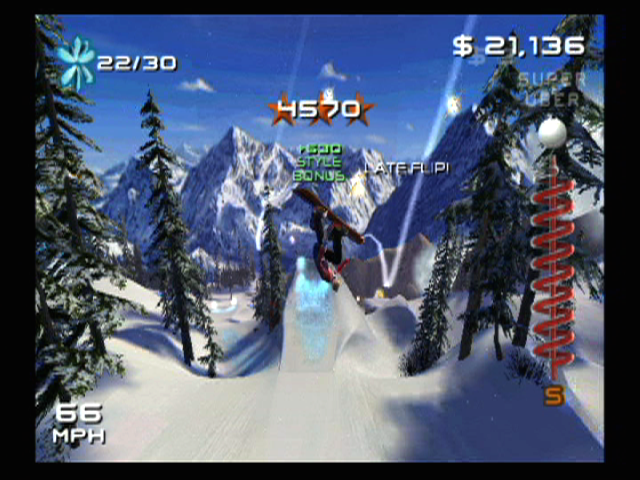
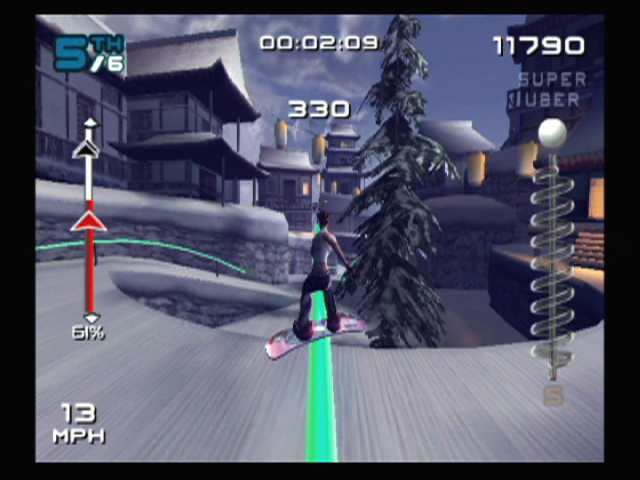
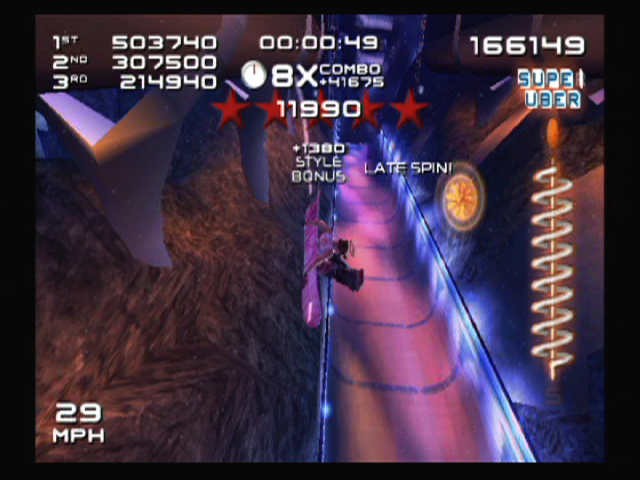
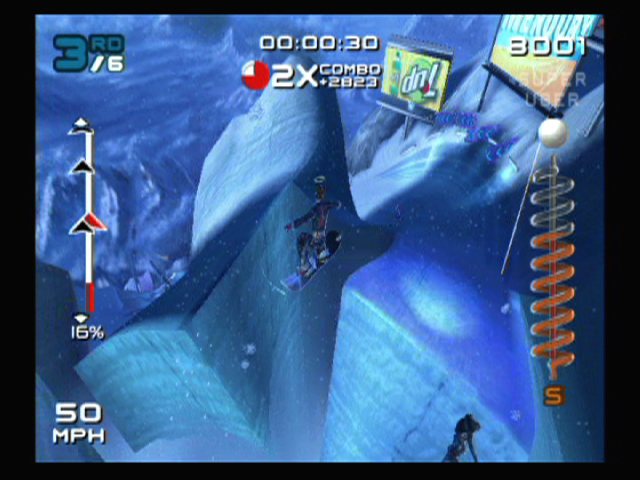
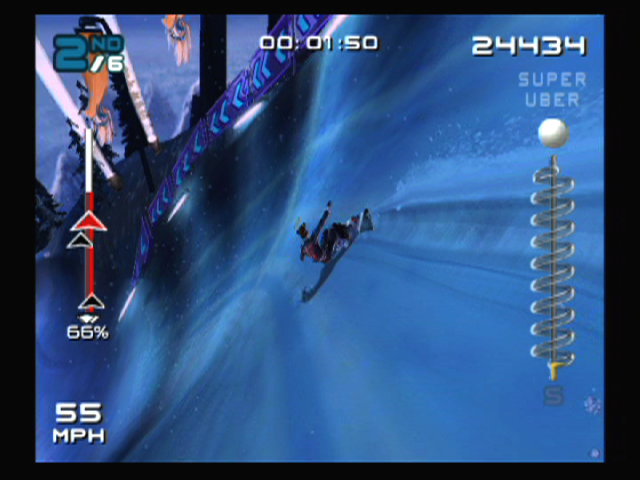
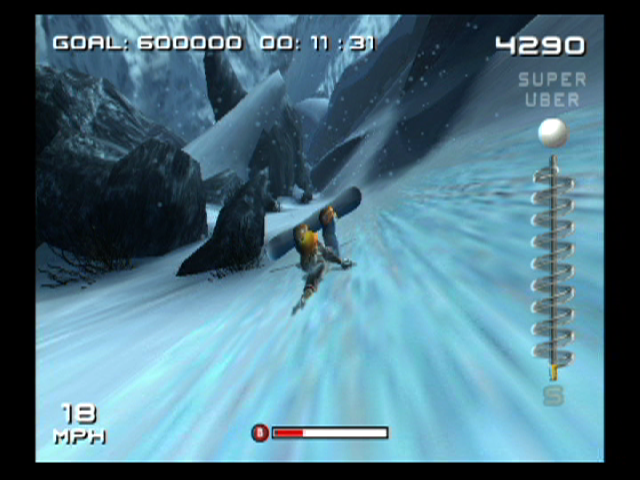
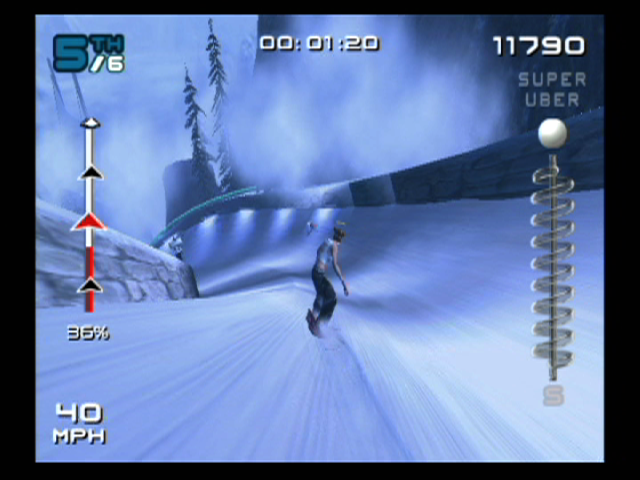
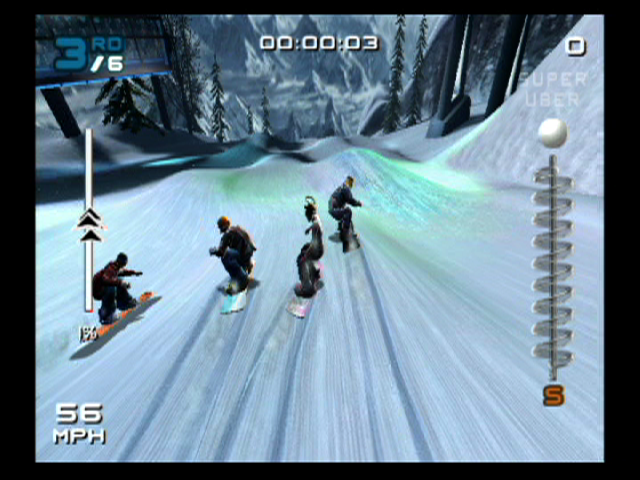
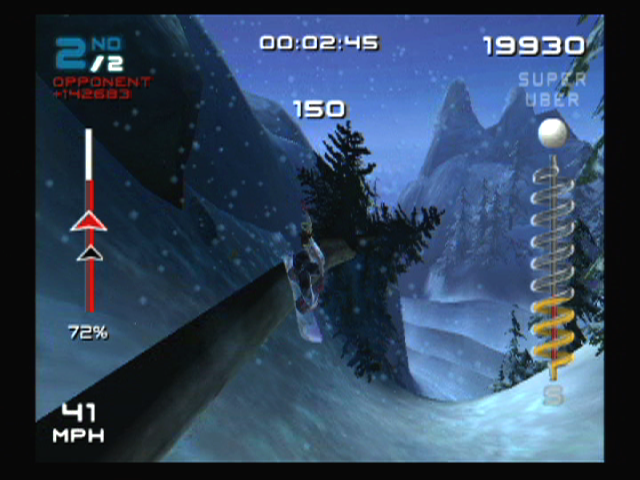
Five quick tips if you’re dropping back in
- Start on Peak 1 and freeride. Learn three different lines down the same route. You’ll find shortcuts without even trying.
- Feather spins and flips. You don’t need 1080s every hit; late rotations score clean and keep you upright.
- Use boost with intention. Save a burst for flat sections and exit speeds after rails.
- Read the snow. Banked corners hold speed if you carve early; icy patches will spit you out if you’re greedy.
- Tinker with camera distance. A touch wider helps with reading terrain on high-speed races.
A small contradiction: SSX 3 looks loud—color, commentary, and big tricks—but the reason it feels great is subtle. Landing angles, edge grip, even how the board chatters on catwalks. Those tiny details make the loud moments sing. Once you notice, you can’t un-notice, and your riding gets cleaner without you thinking about it.
The footprint it left
Open-mountain structure seeped into later action-sports games. The announcer-with-a-personality idea hopped to other EA titles. And the “flow first” feel—where music, motion, and UI tug you along—shows up in surprise places, from racing games to downhill bike sims.
It also captured a time. The EA Sports BIG label had this playful bravado that made extreme sports feel welcoming rather than gatekept. SSX 3 sits right in that sweet spot: stylish, sure, but never snobby.
So, should you play it now?
Honestly, yes. Fire up the old hardware if you’ve got it. If not, plenty of folks run it smoothly on modern setups and still share times and lines. Put on a beanie if it helps set the mood. Take a casual freeride, no pressure. Let the mountain teach you again. Then queue into a race, hit that first kicker, and listen to the track bend to your jump.
You know what? That first clean landing will remind you why this game still lives rent-free in so many heads. It’s winter bottled up in a disc—fast, bright, generous, and just a bit reckless. And that’s exactly what makes SSX 3 timeless.

